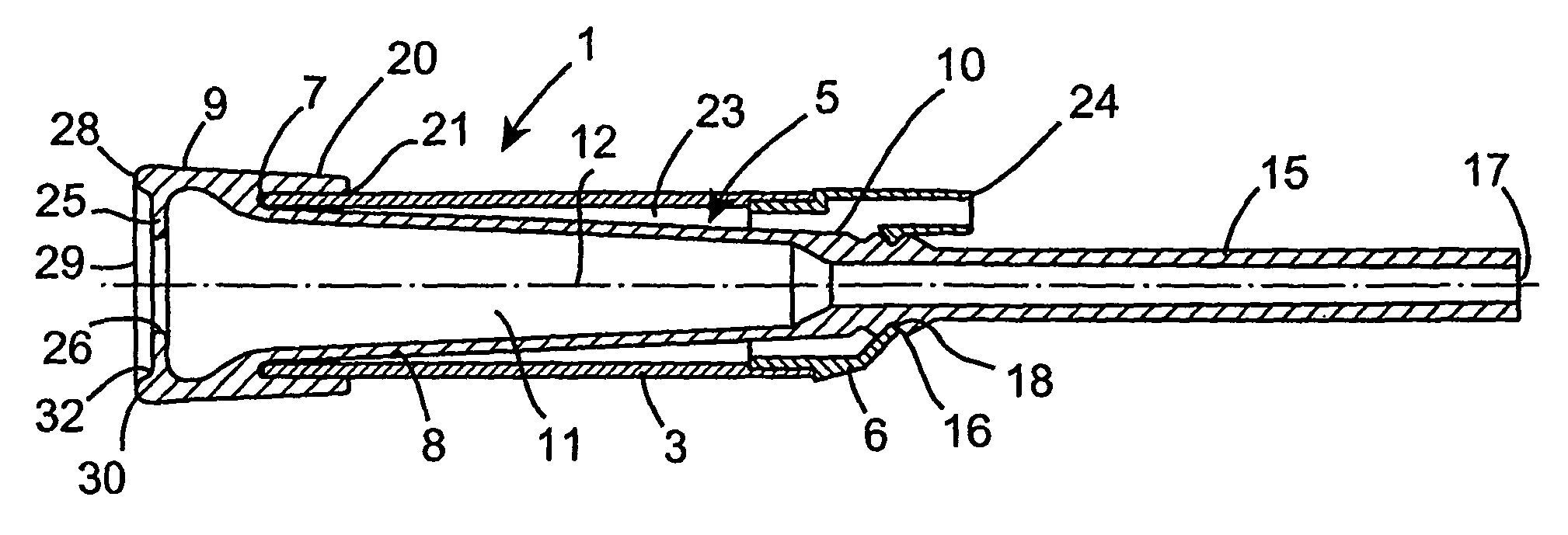Milk liner
a technology of milk liner and udder, which is applied in the field of milk liner, can solve the problems of milk liner creeping along the teat towards the cow's udder, increasing the and extra weight of milking clusters
- Summary
- Abstract
- Description
- Claims
- Application Information
AI Technical Summary
Benefits of technology
Problems solved by technology
Method used
Image
Examples
Embodiment Construction
[0033]Referring to the drawings, there is illustrated a milk liner assembly according to the invention, indicated generally by the reference numeral 1 of a milking cluster 2 also according to the invention for a vacuum operated milking system (also not shown). In this embodiment of the invention the milk liner assembly 1 and the milking cluster 2 are suitable for milking cows. As will be described below with reference to FIG. 5, each milking cluster 2 comprises four milk liner assemblies 1, one for attaching to each teat of a cows udder. Such vacuum operated milking systems will be well known to those skilled in the art, and further description of such systems should not be required.
[0034]The milk liner assembly 1 comprises an outer shell 3 typically of stainless steel material, and a milk liner also according to the invention, indicated generally by the reference numeral 5, located within the outer shell 3. The outer shell 3 is of circular transverse cross-section, and terminates a...
PUM
 Login to View More
Login to View More Abstract
Description
Claims
Application Information
 Login to View More
Login to View More - R&D
- Intellectual Property
- Life Sciences
- Materials
- Tech Scout
- Unparalleled Data Quality
- Higher Quality Content
- 60% Fewer Hallucinations
Browse by: Latest US Patents, China's latest patents, Technical Efficacy Thesaurus, Application Domain, Technology Topic, Popular Technical Reports.
© 2025 PatSnap. All rights reserved.Legal|Privacy policy|Modern Slavery Act Transparency Statement|Sitemap|About US| Contact US: help@patsnap.com



